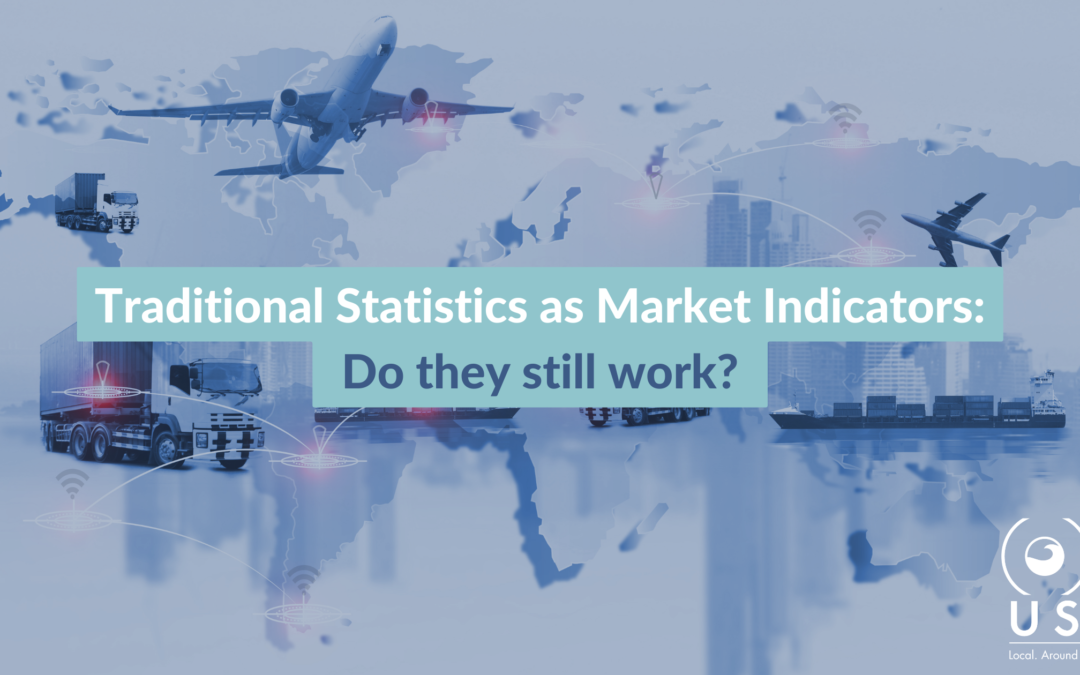
Traditional Statistics as Market Indicators: Do they still work?
The February 2023 jobs report showed some serious job growth, estimating that over 300,000 new jobs were added to the economy. During an average year, that would be tremendous; during a period of economic hardship, like the current global marketplace is still struggling through, you would typically expect those numbers to be big news. Job growth (or the lack of it) is one of the most commonly used statistics economists look at to make their projections and otherwise assess the health of the economy, because the number of employed people impacts everything else—for example, consumer spending.
But, for some reason, other current statistics aren’t showing that much of an increase at all, which is odd. Not all of the stats correlated to job growth are necessarily positive ones, either—for example, increased inflation usually correlates with increased employment numbers. That aside, the majority of other economic metrics are typically the ones associated with healthy, growing economies.
Think about everything that happens when someone is hired as an office worker, for example. Not only does that person get added to payroll and begin drawing a paycheck (and paying taxes, and often receiving benefits—health insurance premiums, 401k contributions, etc.), there are countless other small economic activities that take place from this new hire. The business will often purchase their equipment, like computers, possibly office furniture; coffee in the office will be consumed a bit faster and need to be purchased more often or in greater volume; and frequently (though less typically than a few years ago) that new employee will have some type of commute. A generously short 10-mile commute will consume a gallon of gas every day, and that’s assuming the new employee never makes any stops along the way at a coffee shop.
The point here is that additional jobs correlate with additional economic activities, and those other activities have historically increased right alongside job growth statistics.
So why isn’t the shipping market bouncing back alongside these statistics?
- We’re still in a strange economic situation
Consumer spending habits have changed so dramatically that traditional data analysis methods may not be viable, at least until things change. Think back to the early days of Covid, back when toilet paper and hand sanitizer was next to impossible to find, but think about everything else that went on, too. There was a huge spike in consumer purchasing for all sorts of products, not just consumable or wellness products, partially fueled by stimulus distributions.
A significant chunk of the middle class kept their jobs and shifted to remote work. That meant they still received their paychecks, but also received “unexpected” (at least at the beginning of 2020) windfalls from these stimulus checks. A surprising number of these people used that money not just for maintaining their standard of living, as you normally expect (covering housing payments, putting food on the table, paying bills, etc.) Many used those checks ($1,200, $600, and $1,400 per eligible person, plus additional funds for dependents; the maximum benefit for a married couple with three child dependents totaled $13,900 between April of 2020 and March of 2021) to make purchases they otherwise might have put off. These are long-term, durable purchases—recreational vehicles, televisions, living room furniture, and other high-ticket items that will last for years before they need to be replaced.
But… how many couches does someone need to buy? Not one every few months for the next ten years. The same goes for RVs, televisions, and more of these types of durable goods. But for a few quarters, demand skyrocketed for those types of items. In response, businesses started ordering more of their products, just as you’d expect them to. The problems began when factories started getting overloaded and ports saw significant slowdowns in their turnaround time for unloading. The shipping backlog dragged on for months—but demand started slowing down as the market cooled off from that flurry of stimulus activity. So businesses suddenly woke up one day and realized that they had (in some cases) doubled up on their inventory, and slowed down or stopped their ordering activity in favor of inventory liquidation.
To summarize: a surprising number of long-term, high-value products saw a tremendous spike in demand and sales, businesses overordered to meet that demand, and when the pendulum swung back in the other direction, they dropped their high volume and began selling what they already have. Businesses are now making much smaller, more tightly focused orders for these types of products, rather than focusing on stocking up ahead of time.
Basically, the United States economy packed in a few years’ worth of purchasing activity into one year, and it’s going to take some time before demand rebounds. But that’s compounded by other unusual circumstances:
- Economic uncertainty has changed public psychology
For the first time in many years—for some in the younger generations, maybe the first time in their professional lives—interest rates are no longer at fire sale rates. Interest rates were cut way back and kept low for years, which meant one thing for lots of people: very cheap financing. That’s part of what was fueling big ticket sales like RVs during the Covid demand spike: buyers were able to finance it at extremely low rates. Cheap, low-interest loans are much harder to find. In Q1 of last year (2022), the average 30-year fixed mortgage rate in the United States was just over 3%. This week, it’s 6.5% (source).
This is intended to reduce inflation, and it will, but it will also make consumers less likely to spend money on unnecessary items even if they have it. Everyone who’s been to the grocery store in the past few months has noticed how much prices have gone up across the board. For some items, even sale prices are higher than their old regular price—certain types of coffee, for instance. Add on rumors of issues with some banks and whispers of “recession” in hushed voices, and you have consumers wary of overextending their budgets.
Many consumers have begun questioning what constitutes a “necessary” expense for themselves. Remote work, for example, means that many employees aren’t stopping for a coffee on their way into the office, buying less gas, eating out less often, and a thousand (or more) other small (but, combined, significant) purchases that they have decided they can live without.
- We need new types of data
All of this combined means that old indicators of economic strength (or weakness) may no longer be as accurate as we’re accustomed to. Jobs reports like February’s are still great news to hear, but they no longer mean that we can necessarily look forward to increased consumer spending anymore. Enough consumers are being cautious and keeping an eye on their spending habits closely enough that the data we used to rely on may no longer be viable. This means economists will need to start looking for new sources of information to make their predictions.
Until we have methodology that’s as solid as we’re used to, it might be hard for some businesses to accurately anticipate the demand for their products. That means that the current state of freight shipping and inventory ordering will likely remain as it is for at least a while longer. Currently, many businesses are on a beak-to-trough system, ordering only what they know they’ll need—and will be able to sell. That’s perfectly understandable. In short: when consumers are watching every penny they spend, businesses would be smart to match their caution, and keep a close eye on their own inventory practices. Too many overextended and found themselves in tricky situations—full warehouses with too few customers to sell to—and were seriously damaged as a result.
Businesses should work with a partner who can help them manage their ordering processes step-by-step, from factory floor to last-mile delivery. The more efficient you can make these processes and the more agile you are with your operations, the better you’ll be able to respond to a rapidly shifting market landscape.


